What to do if the English layout is missing. The language icon on the taskbar is gone, what to do
The language bar is an indispensable and very useful tool for changing and simply controlling the active position of the language. In the specified block, it shows which active language is used in this case. If you have only a few of them installed, then it is difficult, but you can do without the panel, but when there are more, you cannot do without the corresponding icon. Therefore, when the language icon disappears from the panel, you just need to return it to its place, especially since this is done easily.
First of all, the language switch is needed in order to find out its active position and, also, in order to change this position with the mouse. The display of the language switcher does not affect the hotkeys, they still work correctly, changing the active state of the language, scrolling through the list in turn.
Also, before starting work on restoring the lost panel, check if it is simply displaced somewhere on the desktop, usually in the upper right corner. Also, the problem may arise after you have entered and exited the settings menu. This is due to the fact that after closing the settings menu, the service is automatically restarted, sometimes it takes a long time, and sometimes it freezes altogether. In this case, a simple system reboot can help.
In total, there are several options for how to return language bar to the taskbar: using Explorer, through the registry editor and using the "Run" line.
The Windows 7 language icon is gone - we return it through the "Control Panel"
This method is simple and straightforward, it allows you to follow the path indicated below, and by checking the appropriate box, return everything to its place. Therefore, you should:
1.Click on the "Start" button;
Working at a computer, the user, when trying to switch the language layout, may find that it is completely absent. This problem is quite common, and there are several options for resolving it.
Initially, it is worth checking if the language layout is activated in the taskbar. Right-click on the taskbar and at the very top look for the "Panels" item. In the submenu that opens, tick the "Language bar" item. If it is absent, the layout will not be displayed. If there is already a confirmation next to it, then we try to uncheck the box and put it again.

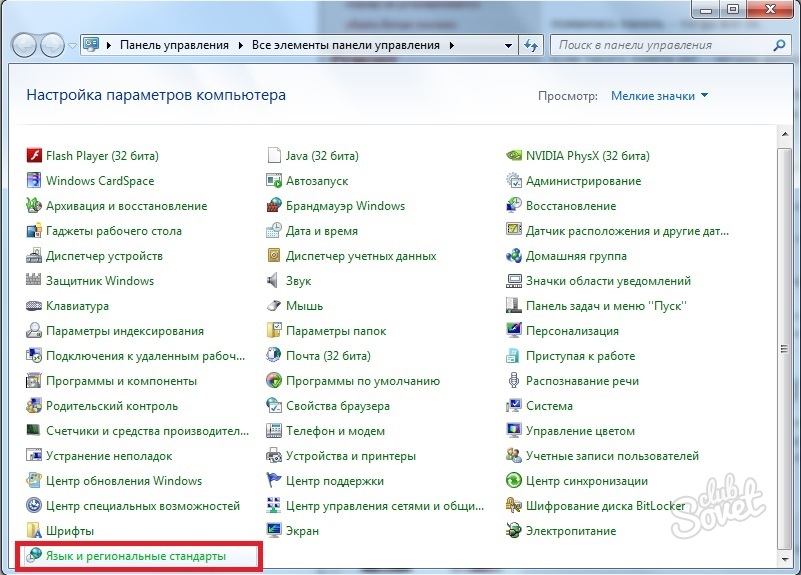







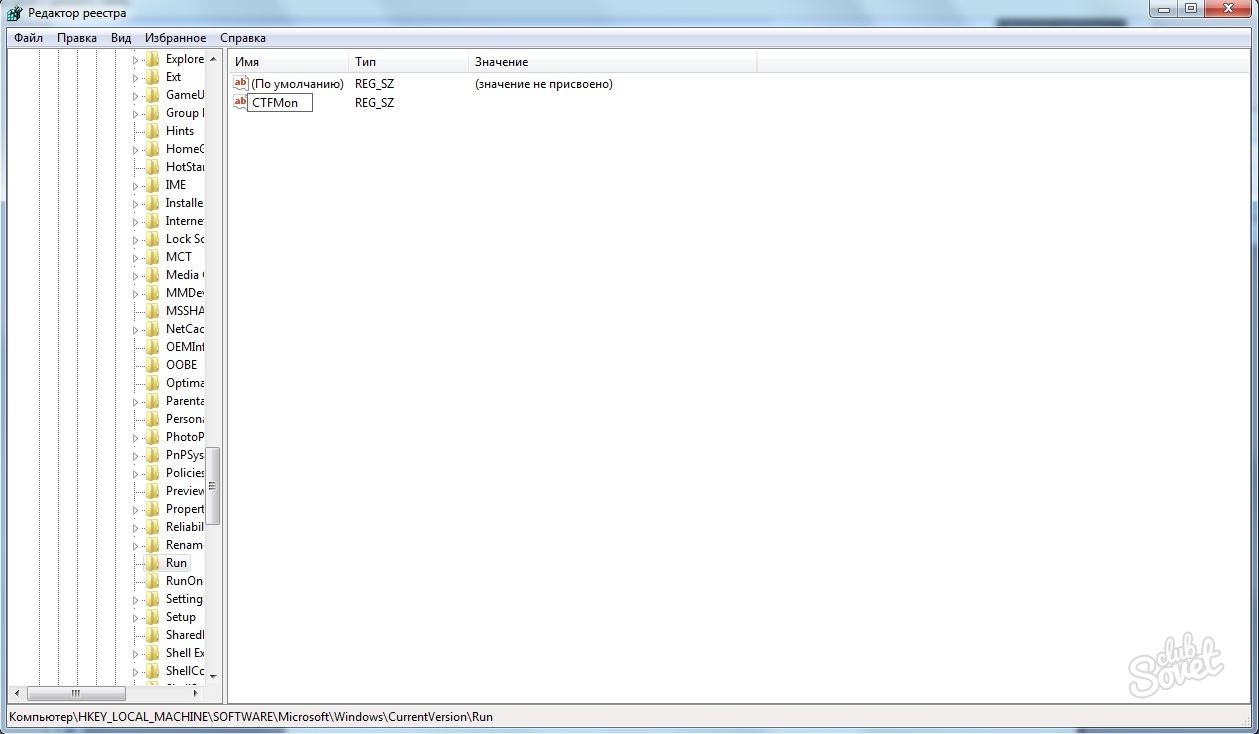

In most cases, using these methods, you can return the missing language layout icon back. However, if it is not displayed, the option to switch the keyboard layout itself remains unchanged.
Sometimes, when we need to switch the keyboard layout, we find that the panels with the language switcher are not in place.
Let's put this badge back.
For Windows 7.
We try to right-click on the taskbar at the bottom and find the Language bar in the Panels item.
there was a panel - then everything is ok.
In this version, everything is much simpler. The developers have finally simplified the process of putting the panel back in place. We press the "start" button, select "Control panel". We are looking for the item "Change keyboard layout ..."

In the next window, in the "Languages and keyboards" tab, click the "change keyboard" button

In the next window, on the "Language bar" tab, we see several options for the location of the language bar. Select "Pinned to the taskbar" and click OK.

That's it, the socket is in place.
If after the performed manipulations nothing appeared, try first to remove the icon (as described above) and then restore it again.
If this does not help, try starting the panel manually. To do this, in the Start-Run or Start-Search menu (or with a WIN-R combination), run the command ctfmon
If the panel appears, add a shortcut to the startup call.
To do this, start the registry editor by executing the regedit command in the Start - Search line.

After starting Registry Editor go to HKEY_LOCAL_MACHINE \ SOFTWARE \ Microsoft \ Windows \ CurrentVersion \ Run

And there create a string parameter (Edit-create-String parameter), which we will call CTFmon.
Then, by right-clicking on it, select the "Change" item and enter the value "C: \ Windows \ System32 \ ctfmon.exe" there.

We save, close the editor and try to reload.
For Windows XP:
Let's try the easiest way. Right-click on an empty space in the bottom panel (where the Start button is). Select the item Panels - Language bar.

If the panel is twisted in place - great. If the panel appears, but somewhere above, scroll down the page and you will find how to put it in place.
If there is no such item, the panel did not appear - read on.
We go into the control panel and find the very last item Languages and regional standards.

On the "Languages" tab, click the "Details" button

In the next window, click the "Language bar" button.
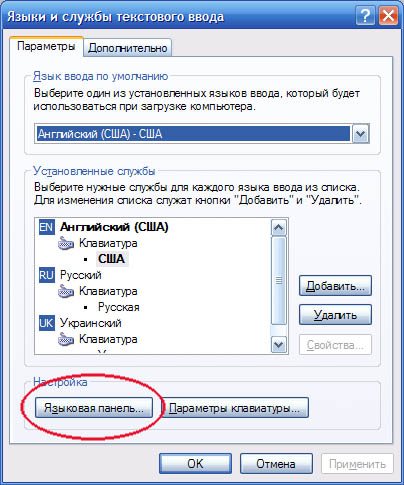
If the Language Bar button is grayed out.

Go to the "Advanced" tab and uncheck the "Turn off additional text services" item and be sure to click Apply.

After that, we return to the "Parameters" tab and see the already active "Language bar" button. We press it.
And in the window that appears, put a checkmark "Display language bar ..."

Click OK a couple of times and look for the appeared panel with the language switcher. Usually it flies up to the right. In the upper right corner we find it. And press the tiny dash button.

The socket returns to its rightful place.
How to get the language icon back. Some may not even notice that they have lost this very badge, but if you constantly write something or fill out some forms on the Internet, you will very quickly discover this loss. Those who have been using a computer for a long time do not need this icon, but newbies cannot do without it. In addition, the keyboard can sometimes also throw out its focus, and at such a moment the coveted keys for switching the layout simply will not work. In such cases, the language switching icon is desperately needed.
How to return the language icon to the taskbar inWindows 10
And today we will learn how to display the language layout icon on the taskbar.
Right-click anywhere on the taskbar, and in the drop-down list, select the most recent item Options.

In the opened window Options go to the very bottom link labeled Task bar, and select it with the left mouse button.
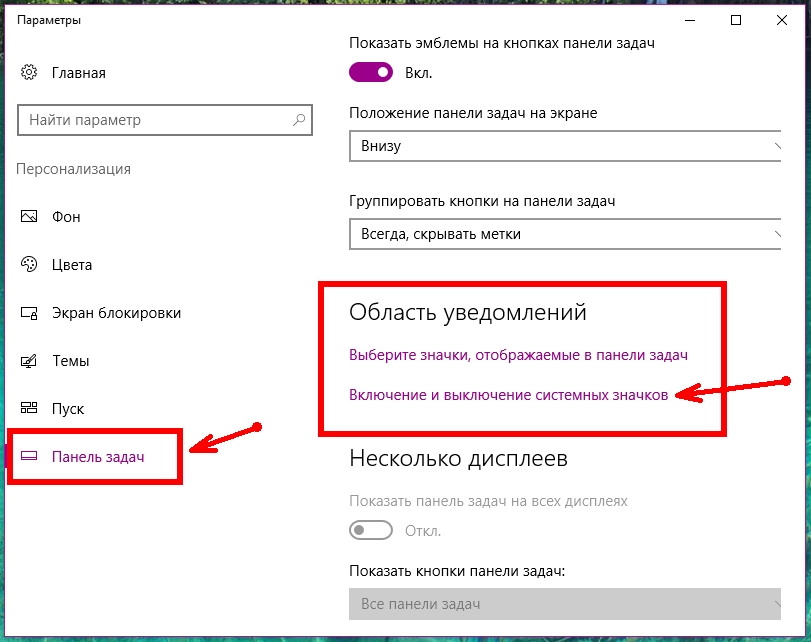
Go to right side windows, lower the slider on the left so that the block is visible - Notification area... It has two links. Left click on the second link Turning system icons on and off.

While loading operating system the absence of the language bar in the lower right corner of the desktop is detected. This could be due to some kind of malfunction in the system under the influence of malware, or someone accidentally hid it. Let's try to return to its place the icon with several languages, which is so necessary for working on a PC.
At the very bottom of the screen is the taskbar, the language bar is usually docked on it. If you right-click anywhere on the taskbar (until it disappears), the language bar will be activated by a checkbox in the Panels tab. Thanks to the panel with languages, you can change the keyboard layout and test input languages right from the desktop. Through the "Start" go to the "Control Panel" and click on change the keyboard layout. In the "Regional and Language Options" window that opens, click on the button to change the keyboard, in the second tab on the left, activate the language bar in the taskbar and the checkbox on the text labels. As soon as you click the "Apply" button, the panel will appear in its place.


The above methods for returning the language panel are suitable for beginners, however experienced users PCs will surely go to the registry for help. We did not consider this option here because of the complexity, but keep in mind that it exists.
 Alternatives to Replace Microsoft Office Visio Command Line Key
Alternatives to Replace Microsoft Office Visio Command Line Key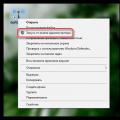 Mhotspot installation and setup Computer did not restart after installation
Mhotspot installation and setup Computer did not restart after installation A tale of three buttons. Column by Evgeny Zobnin. We get customizable on-screen buttons Home, Back and Menu on any Android device (Floating Soft Keys) Assignment of buttons on the phone
A tale of three buttons. Column by Evgeny Zobnin. We get customizable on-screen buttons Home, Back and Menu on any Android device (Floating Soft Keys) Assignment of buttons on the phone